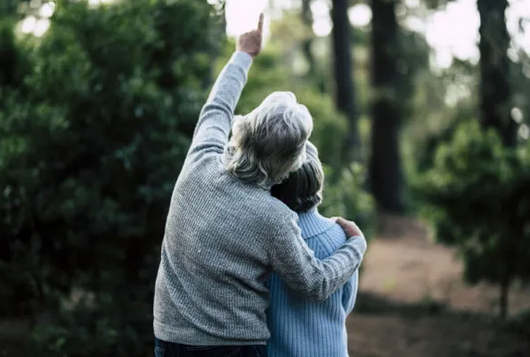Recently published figures show the largest fall in male life expectancy in Switzerland since 1944 and the largest since 1962 for women.
In 2020, a year marked by Covid-19, life expectancy at birth fell to 81.0 for men and 85.1 for women, a decline of 0.9 and 0.5 years respectively compared with 2019. Such a decline had not been observed since 1944 among men and 1962 among women, according to mortality tables calculated by Switzerland’s Federal Statistical Office.
The largest falls in life expectancy for men were recorded in Obwalden (-2.5 years), Ticino (-2.3) and Geneva (-2.3). Ticino and Geneva experienced some of the highest Covid-19 infection rates in Switzerland, according to antibody studies. The highest falls for women were in Jura (-1.8), Geneva (-1.5) and Schwyz (-1.4).
In terms of the number dying, the pattern was similar. Compared to 2019, the number dying in 2020 in Geneva, Ticino and Jura was between 25% and 27% higher. In the cantons of Obwalden, Schwyz, Vaud and Fribourg the number of deaths rose by more than 20%. The average rise across Switzerland was 11%.
Covid-19 in 2020 versus the Spanish flu in 1918
Compared to the Spanish flu of 1918, the number of Covid-19 deaths in Switzerland in 2020 was far lower. In 1918, 22,000 people died of the Spanish flu in Switzerland, compared to around 8,000 from Covid-19 in 2020. The per capita rate was also lower. In 1918, extra deaths were 56 per 100,000 compared 9 per 100,000 in 2020. Between 1917 and 1918, life expectancy fell by 10.1 years for men and 8.4 years for women. These declines are far greater than the 0.9 and 0.5 year falls in life expectancy calculated between 2019 and 2020.
Part of the difference can be explained by the principle age groups affected. Covid-19 mainly took the lives of older people. As well as hitting older people, the Spanish flu pandemic also killed many children under 5 and adults aged 20-40 years old – see data here.
In addition, during the Covid-19 pandemic, hard hit regions like Geneva appear to have kept the relative infection rate among those over 65 far below that of younger age groups and far below levels seen in other European nations attenuating the overall death rate. For example, an antibody study done in Spain in early 2020 revealed infection rates of around 6% among those aged over 50. In Geneva, a similar study at the time showed a rate of 3.7%.
One similarity between 1918 and 2020 is the differences between the French- and Italian-speaking cantons and German-speaking Switzerland. Death rates were far lower in German-speaking Switzerland during both pandemics. Antibody studies suggest significant differences in infection rates earlier in the Covid-19 pandemic. Why is not entirely clear.
When the calculations are done for 2021, the effects of Covid-19 will persist. Since 31 December 2020, more than 3,000 lives in Switzerland have been shortened by the disease. However, in 2021, unlike 2020 and 1918, the disease-busting power of vaccines will have begun to show.
Life expectancy is a potentially confusing term. Expectancy suggests the measure might be a forecast. However, it is a purely historical measure calculated based on past death rates. It reaches its full accuracy for any particular age group only when when everyone in that age cohort has passed away. Unless some new disease appears, life expectancy is likely to snap back to where it was once Covid-19 has been beaten.
Full story here Are you the author? Previous post See more for Next postTags: Covid-19 Switzerland,Editor's Choice,Featured,Health,newsletter





























